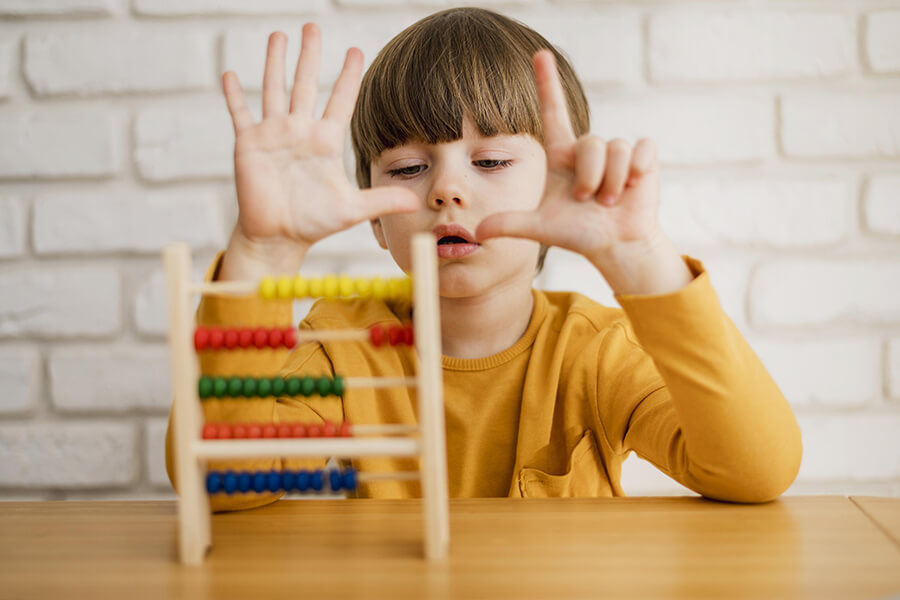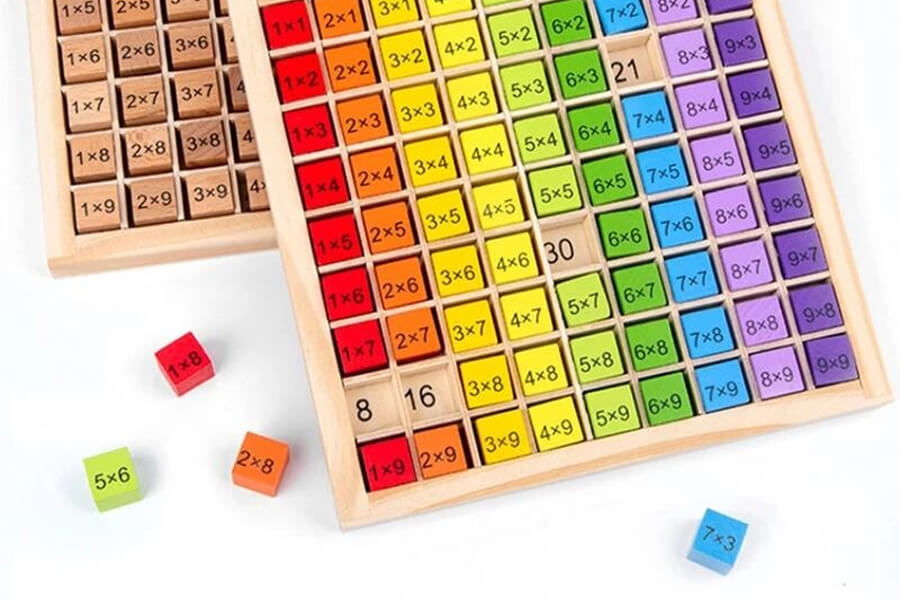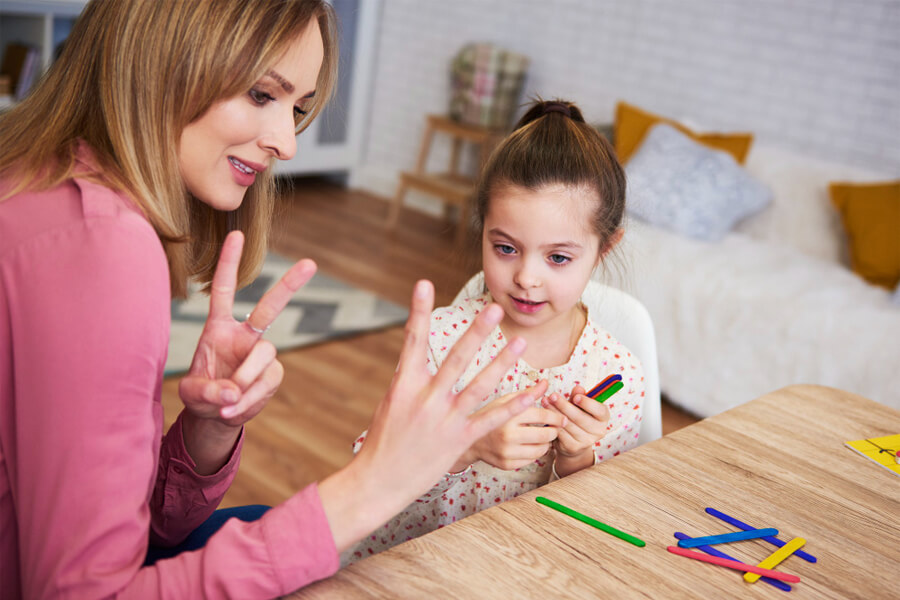Multiplication is a fundamental math skill that children will use throughout their lives. The Montessori method makes it possible to teach multiplications in a creative and interactive way, using materials specifically designed for this. Follow these few tips to teach the times tables to your child in a simple and fun way. This way, learning multiplication tables has never been easier.
Key Takeaways
- Montessori multiplication teaching uses creative, interactive methods with specialized materials.
- The approach emphasizes hands-on learning with tools like beads and counters for visual understanding.
- Montessori’s gentle, pressure-free method allows children to learn multiplication at their own pace.
- This method offers concrete learning experiences, encouraging independent problem-solving and individualized learning.
- Montessori multiplication techniques integrate real-world applications, making learning fun and relevant.
Learning Maths With The Montessori Method
The Montessori Method, a holistic educational approach, places significant emphasis on fostering autonomy, respect, and self-confidence. Central to this philosophy is the belief that children should learn at their own pace, allowing for the full development of their capabilities. Mathematics, an integral part of the Montessori curriculum, is introduced from an early age. This early exposure to counting and number manipulation lays the groundwork for a deeper understanding of complex mathematical concepts later in life.
-
Sensory Engagement Through Specialized Montessori Materials
A defining feature of Montessori education is the use of unique, specialized materials. These materials are meticulously designed to engage all the senses, thereby facilitating learning through exploration and discovery. By manipulating physical objects, children gain a concrete understanding of abstract mathematical concepts.
-
Learning Multiplication Tables with Hands-on Tools
In Montessori classrooms, multiplication tables are taught through a variety of hands-on tools and activities. Children use tangible objects like counters and beads to visualize and understand multiplication. This tactile approach helps demystify complex mathematical operations, making them more accessible and enjoyable.
-
Montessori’s Gentle Approach to Learning Multiplication
Montessori education emphasizes learning without pressure. Children are encouraged to learn multiplication tables at their own pace, without being forced or rushed. This nurturing approach ensures that learning remains a joyous and stress-free experience.
Advantages of the Montessori method for learning multiplication tables
The Montessori approach to learning multiplication tables offers numerous benefits that significantly enhance a child’s mathematical understanding:
- Concrete Learning Experiences: Montessori education uses tactile materials, allowing children to physically manipulate objects for a tangible grasp of numbers and mathematical operations.
- Encourages Independent Problem-Solving: This method fosters self-reliance, as children are motivated to discover solutions independently, boosting their confidence and problem-solving skills.
- Individualized Learning Pace: Children learn at their own speed, ensuring they fully comprehend each concept without feeling rushed or pressured.
- Enhances Focus and Determination: Montessori activities are designed to cultivate concentration and persistence, key traits for academic success.
- Holistic Understanding of Concepts: By using hands-on materials, children develop a deeper, more intuitive understanding of multiplication, which aids in grasping more complex mathematical concepts in the future.
- Integrates Real-world Applications: Montessori multiplication techniques often involve practical life scenarios, helping children understand the real-world relevance of their learning.
- Fosters Joy in Learning: The engaging and interactive nature of Montessori materials makes learning multiplication a fun and enjoyable process.
The Montessori Approach to Multiplication Tables
In a Montessori classroom, learning multiplication tables is a tactile and engaging experience. Children begin by understanding the core principles of multiplication, using Montessori math materials to visualise multiplication concepts.
Learning Through Exploration
Materials like golden beads, spindle boxes, and Seguin boards serve more than mere counting tools; they are gateways to comprehending numbers and their interrelationships. By engaging with these materials, children grasp multiplication concepts organically.
The Path to Multiplication Mastery
The Montessori way is to let children explore multiplication tables at their own pace, discovering patterns and relationships. This method nurtures a solid, intuitive understanding of mathematics, far beyond memorization. With an array of games and practical activities, Montessori classrooms transform learning multiplication into an enjoyable and enriching experience.
Hands-On Learning with Montessori Materials
Rather than rote memorization, Montessori education focuses on hands-on activities. Children use specially designed materials to explore and internalize multiplication. This method emphasizes understanding over repetition, allowing children to grasp multiplication tables through discovery and play.
Incorporating Montessori Techniques at Home
To teach multiplication using the Montessori method at home, use tools like educational games, books, and toys that align with Montessori principles. These tools help make learning multiplication fun and practical, fitting with the Montessori focus on self-led and hands-on learning.
You can easily adopt Montessori principles for teaching multiplication at home. Here’s how:
- Use Montessori-Aligned Tools: Invest in Montessori-style materials like bead chains or number tiles which mimic classroom tools, offering a tactile and visual way to understand multiplication.
- Integrate Playful Learning: Montessori emphasizes learning through play. Incorporate games and activities that involve multiplication concepts. This could be as simple as counting objects during playtime or using everyday items like buttons or beads for grouping and counting.
- Create a Learning-Rich Environment: Designate a specific area in your home with accessible learning resources. This could include a low shelf with math-related materials, encouraging spontaneous exploration.
- Encourage Self-Discovery: Allow your child to explore multiplication concepts at their own pace. Guide them through discovery rather than direct instruction, fostering a deeper understanding and appreciation for mathematics.
- Utilize Montessori-Inspired Educational Resources: Look for books, apps, and games that align with Montessori principles. These resources should promote interactive, self-guided learning and exploration of mathematical concepts.




